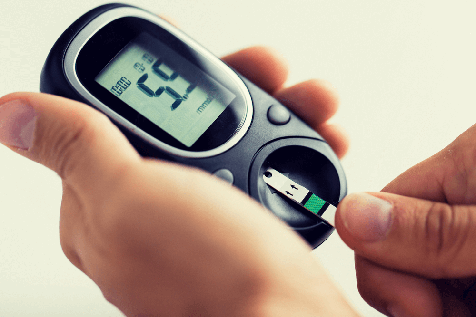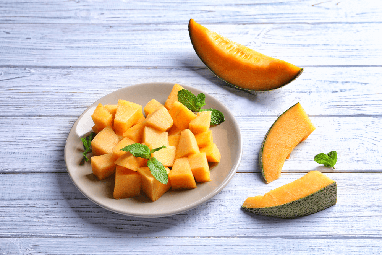La plupart des nutritionnistes recommandent les fruits à index glycémique bas (IG). En effet, une alimentation saine devrait presque toujours inclure des fruits. Ce qui est particulièrement vrai si vous souffrez de fatigue surrénalienne ou du diabète. Cet article vous aide à trouver les meilleurs fruits IG bas convenables à votre santé et votre glycémie.
C’est quoi l’indice glycémique ?

L’indice glycémique est une unité numérique vous indiquant à quelle vitesse les aliments contenant des glucides affectent votre glycémie quand ils sont consommés seuls. Effectivement, cela représente à quel point la nourriture est « sucrée ». L’indice glycémique utilise une échelle de 0 à 100. Un aliment dont l’indice glycémique est élevé provoquera une augmentation importante de la glycémie. Tandis qu’un aliment dont l’indice glycémique est inférieur n’aura pas beaucoup d’impact.
Les scores IG sont notés comme suit : IG bas : 55 ou moins, IG modéré : 56 à 69, IG haut : 70 et plus.
En général, les fruits secs, comme de nombreux aliments transformés ont un IG plus élevé. Un aliment à indice glycémique élevé augmente la glycémie plus qu’un aliment à indice glycémique moyen ou bas. C’est pourquoi il est indispensable, notamment pour les diabétiques, de choisir les aliments à indice glycémique moyen ou bas que ceux à index glycémique élevé.
12 fruits à faible indice glycémique (fruits IG bas)
Découvrez pourquoi nous avons sélectionné ces 12 fruits IG bas ou à faible indice glycémique !
Les cerises (IG=20)
Les cerises regorgent d’antioxydants qui renforcent le système immunitaire. Ils sont ainsi très riches en potassium. Comme les cerises ont une saison de croissance courte, il peut être difficile de les obtenir frais. Toutefois, les cerises acidulées en conserve, qui possède un indice glycémique de 41, restent un excellent substitut tant qu’elles ne sont pas emballées dans du sucre.
Les abricots secs (IG=32)
Les abricots secs sont une excellente alternative quand ils sont consommés en petites quantités. En effet, les fruits secs ont tendance à fournir plus de quantité de glucides. Ils renferment un quart des besoins quotidiens en cuivre et sont riches en vitamine A et E. Vous pouvez les consommer avec des salades ou des céréales comme du couscous.
Les poires (IG=30)
Les poires contiennent des vitamines C et K ainsi que du potassium du calcium, du magnésium et de la vitamine B6… Au lieu de le couper, mangez la poire entière avec la peau pour un apport supplémentaire en fibres. Cela vous procurera 20% de votre apport quotidien recommandé en fibres.
Les pommes (IG=39)
En plus d’offrir un goût satisfaisant, il y a une raison pour laquelle les pommes sont très prisées dans les « régimes minceur » particulièrement grâce à son IG bas. De plus, une seule pomme de taille moyenne fournit environ 20% de vos besoins quotidiens en fibres. Ces derniers aident à vous sentir rassasié plus longtemps, à faire baisser le taux de sucre dans le sang. Les fibres améliorent ainsi le fonctionnement du système digestif. Par ailleurs, les pommes ont une excellente source de vitamine C.
Les oranges (IG= 40)
Les oranges renferment des fibres, du potassium et de la vitamine C, autant de facteurs qui améliorent la santé cardiaque. En outre, ils contiennent plus de 170 composés phytochimiques différents et plus de 60 flavonoïdes. Ces composés ont des propriétés anti-inflammatoires et antioxydantes.
Les prunes (IG=40)
Les prunes englobent des quantités considérables de vitamines A, C et K. Elles renferment ainsi de bonnes sources de potassium, de cuivre et de manganèse et sont riches en antioxydants.
Les fraises (IG= 41)
Les fraises contiennent des niveaux particulièrement élevés d’antioxydants appelés polyphénols. Ces derniers aident le corps à combattre les maladies. Ces antioxydants augmentent également la sensibilité à l’insuline et ralentissent la vitesse à laquelle l’organisme digère et absorbe le sucre. Les fraises sont aussi riches en potassium, en acide folique, en fibres et en vitamine C. En réalité, bien que la plupart des gens associent la vitamine C aux agrumes, 155 grammes de fraises contiennent plus de vitamine C qu’une orange.
Les pêches (IG= 42)
Les pêches contiennent beaucoup de vitamines C et A ainsi que de potassium et de fer. Le potassium permet de réguler le rythme cardiaque et à réduire la pression artérielle. Le fer, quant à lui, aide à transporter l’oxygène des poumons et de l’ensemble du corps. Elles constituent un excellent ajout aux smoothies, qu’ils soient mélangés à des myrtilles ou à la mangue !
Les mangues (IG= 51)
En plus d’être assez faibles en calories et très riches en fibres, les mangues constituent une excellente source de vitamine A, B6 et C. Elles contiennent, en outre, de plus petites quantités de calcium, de zinc et de fer.
Les bananes (IG= 51)
Les bananes sont l’un des fruits les plus consommés au monde, et ce, pour de nombreuses raisons. Il s’agit d’une collation facile à emporter, riche en fibres, en potassium, en vitamine A et C et en magnésium. On estime aussi que les bananes peuvent réduire la pression artérielle et les risques de cancer et d’asthme.
Les raisins (IG= 53)
Les raisins fournissent des fibres saines. Ils contiennent, en outre, une bonne source de vitamine B6 qui améliore le fonctionnement du cerveau et les hormones de l’humeur.
Les cantaloups (IG=54)

Les cantaloups sont une excellente source de vitamines C et A. La vitamine A améliore la santé de vos yeux. Ils contiennent également une multitude de vitamines B dont les vitamines B1, B3, B6 et le folate. Ils renferment aussi de bonnes sources de vitamines K, de potassium et de magnésium.
Régime Index Glycémique bas : une bonne idée ?
Sources :
https://docteurbonnebouffe.com/meilleurs-fruits-index-glycemique-bas/https://www.passeportsante.net/fr/Actualites/Dossiers/DossierComplexe.aspx?doc=mincir-index-glycemique-index-glycemique-des-fruits-difficile-de-s-y-retrouver



